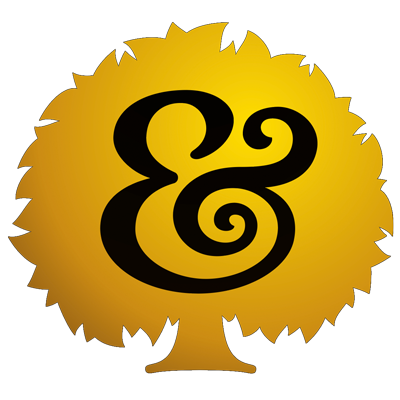Typographic Best Practices
The full gamut of typographic tenets would be impossible to go into in such a small space.
But because I really do believe type should be for everyone, it feels like a good idea to let laypeople know a few tips and tricks for what will make their typography seem more professional!
Character Tips
How a designer uses individual characters (glyphs) can make them seem polished. Or perhaps it’s more fair to say that when a designer doesn’t use the right glyphs, it makes them seem like they don’t know what they’re doing!
As a rule, I don’t advocate rules that have no real reasoning behind them besides “that’s how it’s done,” so I’ll be sure to explain the whys as we go along!
Quotation Marks
Every font contains both straight quotes (often called “dumb quotes”) and typographer’s quotes (often called “smart” or “curly quotes”).
Straight quotes were created so that one key on an old-fashioned typewriter keyboard could be used for both opening and closing quotation marks, as well as a host of other glyphs (prime marks used to designate feet and inches, the top stroke of the exclamation point, and so on). Even today, there’s only one key on the QWERTY keyboard devoted to quotation marks.
Almost every application that sets type these days automatically switches out straight quotes for curly quotes automatically, so there’s usually nothing to worry about.
BUT… sometimes you have to enter them manually. For example, if you’ve copied text from a source that uses straight quotes. In cases like that, use the shortcuts in the example!
Why use these? Typographer’s quotes are directional. They don’t just tell the reader that this is a quotation, they state where the quotation begins and ends. That’s an important visual cue!
Dashes
Type designers build different kinds of dashes based on how they’re going to be used.
Hyphens are the smallest dashes. They’re used to break words into syllables or to join compound words.
En dashes are used to designate ranges. Whenever you can replace the dash with the words “to” or “through,” use an en dash.
Em dashes are the longest, and they indicate abrupt changes or interruptions in thought. They’re also used for attributions — in pullquotes, for example.
In general, don’t use spaces around dashes. The one great exception to this is on the web, where unspaced dashes can wreak havoc on line length!
Why such silly, similar names? Ens and ems are old-fashioned printers’ units of measurement, originally named for the width of an N and and M in metal type. Nowadays, in layout, an em is the full height of a type instance — i.e., one em of 12pt type is 12pts. This has translated to the web, where one em is the standard browser setting for body size in an end user’s browser.
Never use quotation marks to indicate emphasis! There are a thousand ways of doing that, from using italics to using different weights, styles, and colors of type. The moment you use quotes to indicate emphasis, you’re turning your statement into an ironic one. A sign that says “FRESH” FISH is actually saying just the opposite.
Italics
First off, there’s a difference between an Italic and an Oblique. Italics conform to a different design tradition from upright (Roman) characters. Not only are they slanted, they’re differently constructed.
When a typeface has a style that’s slanted but fundamentally unchanged, it’s called an oblique.
An important thing to remember about italics: Your typeface family needs to have an italic style (a whole additional font or fonts) in order for that italic to be used when you click the “I” button in a lower-level typesetting program like Microsoft Word. If it doesn’t, you get a fake italic that looks awful!
Paragraph Tips
Coming soon!




